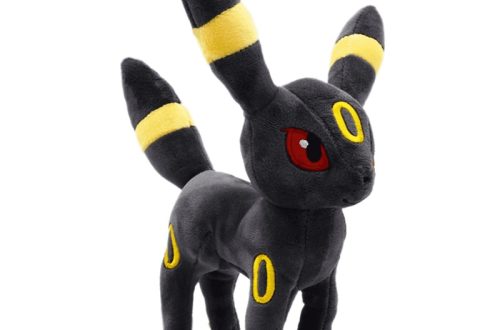Cats are natural-born hunters with seemingly boundless energy. However, indoor cats often lack the stimulation they crave, leading to boredom and destructive behaviors. Interactive cat toys can be the purrfect solution, providing both physical and mental exercise to keep your feline friend happy and healthy.
Part 1: The Benefits of Interactive Play

1. Physical and Mental Stimulation
Interactive toys mimic prey, triggering a cat’s natural hunting instincts. Chasing, pouncing, and swatting at toys provide much-needed exercise, promoting muscle development, weight management, and agility. This play also stimulates the mind, preventing boredom and frustration that can lead to destructive behaviors like scratching furniture or chewing on wires.
2. Bonding and Relationship Building
Engaging in interactive play sessions with your cat can be a delightful way to strengthen your bond. Wanding toys, in particular, offer a great opportunity for you to direct the play and engage in shared fun with your feline companion. By actively participating in play with your cat, you’re not only providing them with mental and physical stimulation, but you’re also fostering a sense of companionship and trust. As you move the wand, your cat will eagerly chase and pounce, relishing in the attention and interaction. This shared activity can lead to a deeper connection, as your cat learns to associate you with enjoyable and engaging experiences. Through these playful interactions, you’ll be able to develop a stronger and more meaningful relationship with your feline friend, ultimately enhancing their well-being and contentment.

Part 2: Choosing the Right Interactive Toys
1. Consider Your Cat’s Preferences
Cats, much like humans, have diverse personalities and individual preferences, especially when it comes to toys. Some may have a penchant for stalking and pouncing on moving toys, while others enjoy batting at dangling objects that prompt their hunting instincts. Additionally, kittens tend to be more energetic and may require faster-paced toys that cater to their playful and curious nature. On the other hand, senior cats might prefer slower-moving options that are gentler on their pace, yet still engaging. It’s crucial to pay attention to your cat’s natural inclinations and behaviors when selecting toys. Observing their play habits and reactions can provide insight into their preferences, allowing you to choose toys that align with their unique personalities and offer them the most enjoyment and enrichment. By considering your cat’s individual traits and tendencies, you can ensure their playtime is both enjoyable and tailored to their specific needs, supporting their overall well-being and happiness.
2. Variety is Key
Even the most captivating toy can lose its appeal over time. Rotate your cat’s toy selection every few days to keep them engaged. This will also prevent them from becoming fixated on a single toy and neglecting others.
Here are some popular interactive cat toys to consider:

Wand toys: These feature feathers, ribbons, or other attachments attached to a long stick or wire. Wand toys allow you to mimic the erratic movements of prey, encouraging stalking and pouncing behaviors.
Puzzle toys: These mentally stimulating toys require your cat to manipulate levers, paw at compartments, or roll objects to reveal hidden treats or kibble. Puzzle toys provide enrichment and keep your cat occupied for extended periods.
Laser pointers: The tiny red dot from a laser pointer can be irresistible to cats. Be sure to allow your cat to “catch” the dot occasionally to prevent frustration. Never shine the laser pointer directly in your cat’s eyes.
Automated toys: These battery-operated or electronic toys move on their own, offering independent play for your cat. Automated toys can be a lifesaver for busy pet parents, but be sure to choose one that is safe and won’t frustrate your cat.
Part 3: Making the Most of Playtime
1. Schedule Play Sessions
Dedicate 10-15 minutes, two to three times a day, for interactive play sessions with your cat. Consistency is key to establishing a routine and ensuring your cat gets the exercise they need.

2. Mimic Natural Hunting Patterns
During playtime with your cat, it’s beneficial to incorporate various elements that mimic a natural hunting sequence. Start by engaging your cat in periods of stalking, encouraging them to observe and plan their movements before springing into action. This can be followed by bursts of high-energy movement, such as quick and erratic movements of a wand toy or a feather teaser, mimicking the movement of prey. This phase allows your cat to unleash their natural chasing and pouncing instincts. Finally, conclude the play session with a “capture” moment, where your cat “catches” the toy, offering a sense of satisfaction and accomplishment. This sequence of play not only fulfills your cat’s natural hunting behaviors but also provides mental and physical stimulation, contributing to their overall well-being. By incorporating these elements into playtime, you’re effectively providing a holistic and enriching play experience that aligns with your cat’s natural instincts and contributes to their satisfaction and happiness.
3. Keep it Positive
Playtime should be a fun and rewarding experience for both you and your cat. Use positive reinforcement with praise and treats to keep your cat engaged. End playtime on a high note, leaving your cat wanting more.
Part 4: Safety Considerations
1. Supervise Play
It’s crucial to always supervise your cat during playtime, particularly when they are engaging with toys that contain small parts or strings. This proactive measure is essential for your cat’s safety, as it can help prevent accidental ingestion or choking incidents. Cats, especially kittens, are naturally curious and may explore toys by mouthing or chewing on them. This behavior poses a potential risk if the toys contain small detachable parts that could be swallowed. Similarly, strings and long cords from toys can pose a strangulation hazard if left unattended. By closely monitoring your cat’s interactions with toys, you can swiftly intervene to remove any potentially hazardous items and ensure their play remains safe and enjoyable. Your vigilance during playtime helps create a secure environment for your feline companion, minimizing the risk of accidents and promoting peace of mind for both you and your pet.

2. Choose Safe Toys
Inspect toys regularly for damage and discard any that are broken or have loose parts. Avoid toys with sharp edges, strings that are too long, or small pieces that can be a choking hazard.
3. Put Toys Away
When playtime is over, put toys away to prevent unsupervised chewing or batting. This will also keep the toys novel and exciting for your cat’s next play session.
By incorporating interactive play into your cat’s daily routine, you can provide them with the physical and mental stimulation they need to stay happy and healthy. With a variety of engaging toys and dedicated playtime sessions, you and your feline friend can create lasting memories and strengthen your bond.


